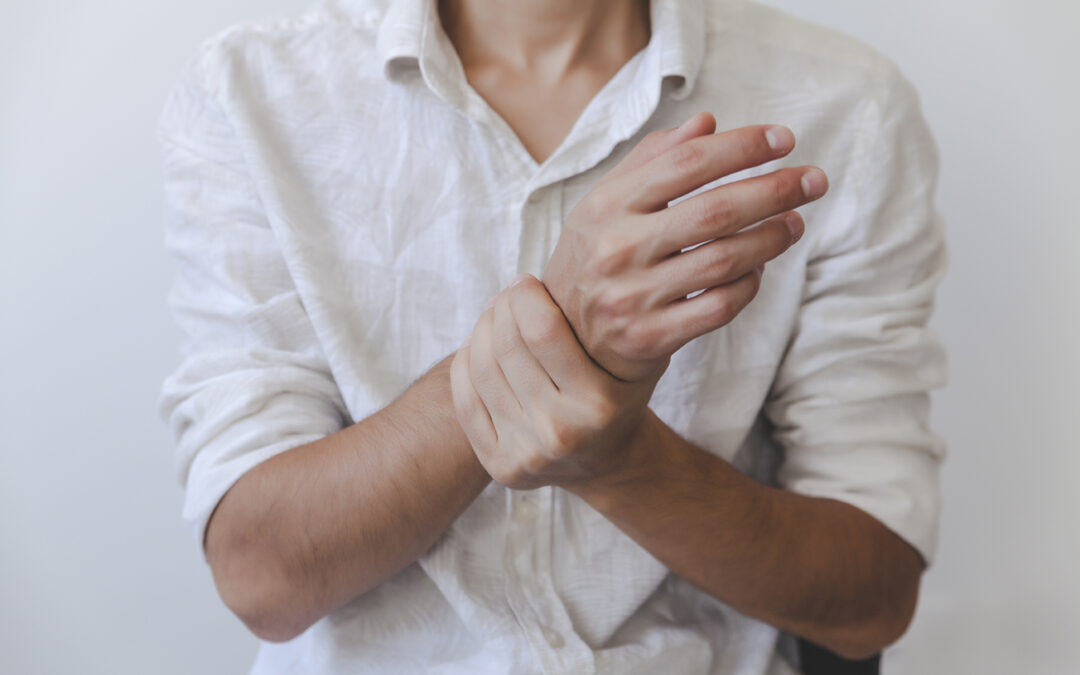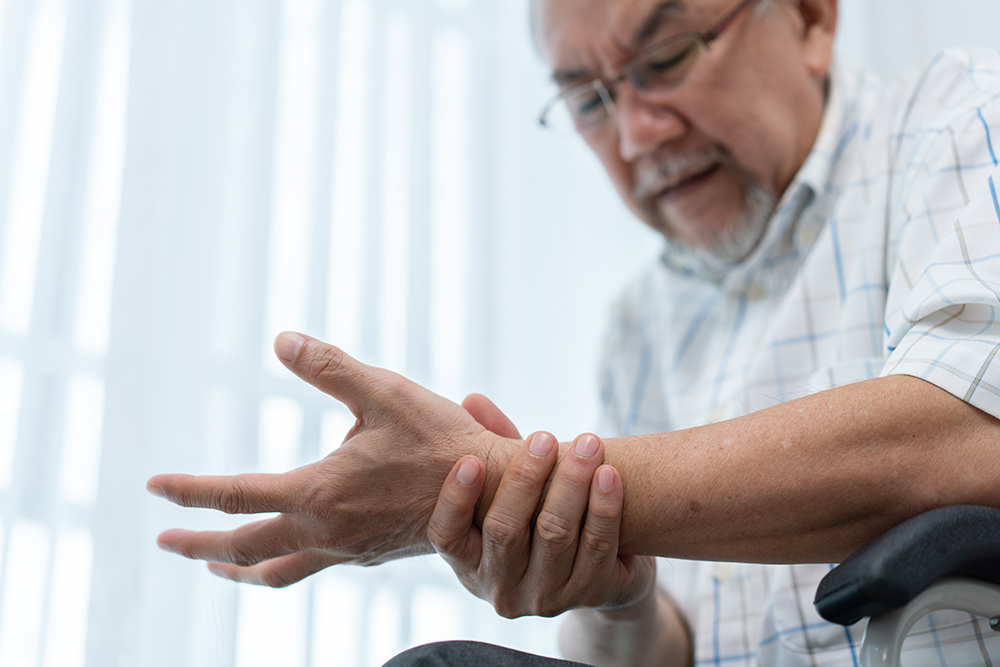Contents
Are you feeling hand or wrist pain after lifting weights? Finding a solution can be essential to continuing your regular workout routine. Wrist pain is highly prevalent in groups who partake in physically demanding activities from day to day, according to one systematic review. People who do manual labor or engage in high-intensity sports tend to be especially susceptible. If you’re regularly engaging in strenuous strength training activities, you might be at risk for wrist pain. This pain can develop due to persistent strain on your wrists. Whether you’re lifting dumbbells or barbells, gripping heavy weights can put a lot of pressure on your wrists.
Do you want to reduce your wrist pain while maintaining your fitness routine? Physical therapy can help. Your physical therapist can work with you to find long-term solutions to your wrist pain. With PT sports performance training, you can continue improving your physical condition in safe, sustainable ways. Learning more about the top PT treatments for wrist pain can demonstrate why physical therapy may be the right choice for you.
How to stop wrist pain from lifting weights: Top PT treatments
- Manual therapy — Manual therapy refers to hands-on physical therapy techniques. This approach can be highly effective for delivering long-lasting relief from your wrist pain. However, the benefits of manual therapy aren’t limited to pain relief. In addition to relieving tension and discomfort, manual therapy can help improve your flexibility and circulation. When addressing your wrist pain, your physical therapist may utilize manual techniques such as joint mobilization and therapeutic stretching. The most effective techniques will depend on your particular condition. Your physical therapist will tailor treatment to your personal needs, condition and recovery goals. For example, if your wrist pain is due to muscle strain from excessive weightlifting, your physical therapist may incorporate soft tissue manipulation into your treatment. With soft tissue manipulation, your physical therapist will apply controlled motions and gentle pressure to the soft tissue around your wrist. This can help relieve tension and stimulate your body’s natural healing processes.
- Ultrasound — Ultrasound is a physical therapy treatment often used to address painful soft tissue conditions. If you’re experiencing pain from a strain, sprain or other soft tissue injury, ultrasound therapy may be beneficial. This treatment method uses sound waves to generate heat deep in your soft tissue. Using an ultrasound wand, your physical therapist can directly target the source of your wrist pain. The heat created by ultrasound therapy’s vibrations can help reduce pain and swelling in the targeted area. If you’re looking for a solution to painful inflammation from a condition like tendinitis, ultrasound may be right for you.
- Kinesiology taping — Kinesiology taping helps provide joint support for weak joints. This physical therapy modality is a type of sports taping designed to support muscles and joints. Your physical therapist can help apply kinesiology tape around your wrist or wherever it’s most needed. The material is thin and flexible, allowing it to provide support without limiting your range of motion. In addition to supporting the tissue around your wrist joint, kinesiology tape can also help boost blood circulation. If you’re recovering from a wrist injury, this can accelerate your recovery. By using kinesiology tape during weightlifting exercises and physical therapy sessions, you can reduce your pain and experience better results.
- Form training — Wrist pain when lifting weights is often caused by poor form. If you’re not lifting properly, you may be putting more strain on your wrists than necessary. This can lead to discomfort and increase your risk of injury. To ensure that you’re staying safe and getting the most out of your exercise routine, your physical therapist can help you hone your weightlifting form.
How to stop ulnar wrist pain from lifting weights: 3 great exercises
The ulna is a long bone in your forearm that ends at the pinky side of your wrist. Pain around this part of the wrist is sometimes referred to as ulnar wrist pain. Ulnar wrist pain can be caused by tendinitis, wrist sprains and other conditions. Physical therapy is an effective option for ulnar wrist pain.
Your physical therapist can treat your pain with methods such as manual therapy and kinesiology taping. In addition to these forms of treatment, your physical therapist can also help you take an active role in your own recovery through guided exercises. By engaging in targeted PT exercises, you can work to improve your condition and find relief. The exercises your physical therapist recommends may vary based on your condition and capacity. Here are some great exercises that could be part of your treatment plan:
- Nerve gliding — If you’re experiencing ulnar wrist pain due to nerve compression, nerve-gliding exercises may help you find relief. Nerve gliding exercises work to reduce pressure around the cubital tunnel, which houses the ulnar nerve. To perform a nerve-gliding exercise, start with your arm extended in front of you. Position your hand so that your palm is facing up. Next, bend your arm until your elbow is at a 90-degree angle. Hold this position for about five seconds; then bend your wrist so that your palm faces upward and your fingers point back toward your body. After holding this position for another five seconds, rotate your wrist to point your hand away from your body. Holding for five seconds again, you can then extend your arm back to the starting position. Repeating these positions a few times every day can help alleviate pressure around your ulnar nerve.
- Grip strengthening — Weakness in the muscles used for gripping can lead to pain when lifting weights. There are a few different exercises you can do to build grip strength. One of the most effective involves a grip training tool. These handheld tools use built-in springs to provide resistance. To use a grip training tool, hold it in your hand and squeeze. Try to hold each squeeze for a few seconds before releasing. You should feel the squeeze engaging muscles in your forearm and wrist. Performing multiple repetitions can help build muscles and improve stability around your wrist. Your physical therapist can help you practice more grip exercises that increase strength without causing more wrist pain.
- Wrist bending — Exercises that involve bending your wrist can help improve your wrist’s flexibility and reduce tension. These exercises often target the area around the ulna, which can help relieve any ulnar pain you’re experiencing. Do you want to stretch and strengthen the muscles responsible for wrist bending? To start, hold a small weight in one hand. Position your hand with your thumb facing upward, as if you’re about to shake someone’s hand. From this position, slowly bend your wrist forward. Your hand should tilt until your thumb points directly forward. Hold this position for around 10 seconds; then tilt your hand back up into the starting position. This motion will target the muscles and tendons around the ulnar side of your wrist. Your physical therapist can help you practice this exercise, potentially increasing your weights and number of repetitions as you make progress.
Learn how to lift with less pain at Lattimore Physical Therapy
If you’re looking to address your wrist pain while continuing to build upper body strength, Lattimore Physical Therapy can help you each step of the way. We’re committed to helping our patients succeed. Whether you’re training for competitive weightlifting or just want to work out more comfortably, we’ll work with you to meet your goals.
Contact our team today for more information or to schedule an initial appointment.



